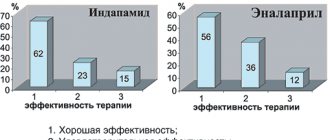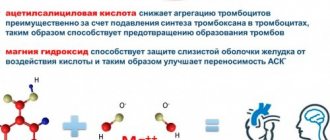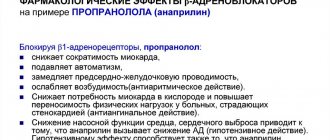Cardiovascular diseases have remained the leading cause of death worldwide for centuries. An average of 17 million people die from CVDs every year. The scientific community claims that the situation will worsen and the number of victims will rapidly increase. In order to protect your body as much as possible and stop illnesses in a timely manner, you should regularly visit a doctor and undergo diagnostics. MRI examination is considered modern, informative and accurate. How often should a study be carried out, does the magnetic field affect the human body and what do you need to know about cardiac tomography?
Specifics of the scanned area
MRI involves scanning the entire cardiovascular system, and not just a separate organ. The heart is a fibromuscular organ that is responsible for the flow of blood through the blood vessels. This is possible through constant rhythmic contractions followed by relaxation (the combination of actions creates a cardiac cycle).
Content:
- Specifics of the scanned area
- The principle of operation of a magnetic resonance imaging scanner
- Virtual endoscopy
- Contrast tomography
- Indications and contraindications for the procedure
- How does a heart and blood vessel scan work?
- Methodology
The heart of vertebrate living organisms consists of endothelium, cardiac and connective tissue. In this case, the cardiac muscle is distinguished as a special type of striated muscle tissue, since it is found only in the heart.
The average person's heart beats 72 times per minute. Over 66 years, the organ will complete approximately 2.5 billion cardiac cycles of contraction and relaxation.
The MRI scanner faces a difficult task. The equipment must record several types of tissues and differentiate them.
Moreover, the organ is in constant motion, which also affects the scanning performance. How exactly is the diagnosis carried out and how informative are the resulting images?
Examination in a modern clinic
When undergoing an MRI in our clinic, you can count on the high professionalism of our staff. The staff quickly resolves issues that arise during the study, reduces the duration of the procedure to a minimum without compromising quality.
As a result, MRI makes it possible to quickly identify injuries and acute illnesses and allows one to obtain valuable information in an urgent manner, for example, when transporting a patient by ambulance.
We employ experienced diagnosticians who take the most informative images. An official medical report is issued in digital and written form. Rate this article: (1 rated 5 out of 5)
The principle of operation of a magnetic resonance imaging scanner
The operating principle of MRI is based on the study of the magnetic properties of human tissues that are saturated with hydrogen. It is known that a person consists largely of water, and it contains elementary particles protons.
If you place a proton in a powerful magnetic field, the particles will change their spatial orientation and begin to emit radio waves with different intensities and frequencies. The MRI machine is this powerful magnetic field. Moreover, it detects radio waves, calculates the location of the protons to which they are attached, and therefore finds the hydrogen atom itself.
Modern tomographs are equipped with sources of strong magnetic fields, which improves diagnostic information. In medical practice, both permanent neodymium and electromagnets operating in liquid helium are used.
They differ in the strength of the magnetic field. In constants it reaches up to 0.7 Tesla, in electromagnets - from 1 to 3 Tesla. Typically, the accuracy of MRI images is identical when using different sources.
Only the “response” of the tissues to the study differs. The quality of the picture largely depends on the settings and size of the equipment. For cardiac tomography, only electromagnets from 3 Tesla are ideal.
Types of equipment
There are several types of equipment on which diagnostics are carried out. There are open and closed devices. Tomographs are also divided into:
- low-floor - power up to 1 Tesla, usually 0.3 - 0.4 T;
- high-field - power 1.5 - 3 Tesla.
Some experts also highlight 1 Tesla mid-field devices.
The higher the magnetic field strength, the better the quality of the resulting images. Open devices have low voltage, so choosing such a tomograph is not always advisable. Always consult your doctor before going for an examination so as not to waste extra money and time redoing the tomography using other equipment.
Virtual endoscopy
The development of computer technology has led to the emergence of a new diagnostic method - virtual endoscopy. What is it and how does it work? Virtual endoscopy is performed using a computer or magnetic resonance imaging scanner. This is a non-invasive technique that allows you to view internal cavities without inserting an endoscope. Special computer programs broadcast the image of the scanned area in real time. The specialist can observe the diagnosed area through the monitor screen from any angle, as with a standard endoscopic examination.
Virtual endoscopy is indicated for severe pathologies of the cardiovascular or respiratory system, when manipulation with an endoscope is impossible. The method is used in oncology, urology, angiology and other branches of medicine. Diagnostic results are provided to the patient in DICOM format for further examination by other specialists.
Contrast tomography
Tomography using contrast is used to improve the differentiation of tissues and organs. This way the picture becomes clearer and more informative, and it is much easier for the doctor to navigate the resulting images. The vast majority of MRI contrast agents contain gadolinium. It enters the body intravenously, spreads through the bloodstream, staining all organs in its path.
Cardiac MRI uses an intravenous injection method. Gadolinium interacts with hydrogen protons, which increases the contrast of the three-dimensional image. The substance is considered completely safe for the human body and is excreted naturally through the kidneys.
The decision to perform contrast tomography is made by the doctor. In most cases, standard diagnostics without the use of auxiliary manipulations is sufficient.
Moreover, contrast agents are associated with a high risk of side effects.
results
The study is interpreted by a diagnostician - a radiologist. The conclusion is issued on the day of the examination, but a description of the images may take the doctor several hours.
The doctor examines the obtained images and compares them with normal values:
- size and location of organs, symmetry;
- presence/absence of abnormal formations;
- presence/absence of an aneurysm, free fluid, blood clots in the blood stream;
- signs of infection and inflammation;
- stagnation in the ducts;
- traumatic injuries.
Indications and contraindications for the procedure
MRI is considered a safe procedure with a minimal list of contraindications. There are absolute and relative contraindications. The first category includes the presence of a pacemaker, a ferromagnetic or electronic middle ear implant, a ferromagnetic Ilizarov apparatus, large metal implants, or ferromagnetic fragments. What is this connected with? All these devices can influence the magnetic field, distorting the final result. As a result, the diagnosis will turn out to be uninformative, and the person will waste personal time and financial resources.
Indications for cardiac MRI:
- congenital or acquired organ defects;
- dysfunction of the cardiovascular system;
- thrombosis, cysts, cancerous tumors, regardless of nature and stage;
- assessment of cardiac functionality after a heart attack;
- general diagnostics of the organ before/after surgery, assessment of the effectiveness of the therapeutic course, monitoring the recovery process.
Do not undergo an MRI scan without first consulting your doctor.
Even preventive examinations should be carried out as prescribed. Self-medication can only harm both psychological and physical health. Trust your doctor and strictly follow his instructions.
Relative contraindications include:
- insulin pumps, non-ferromagnetic implants, prosthetic heart valves, hemostatic clips (are not a contraindication if the device does not contain metal elements);
- decompensated heart failure;
- first trimester of pregnancy (the scientific community still does not have enough evidence about the harm, benefit or neutral effect of the magnetic field on the fetus. But MRI is still preferable to X-ray or CT for a pregnant woman);
- claustrophobia, panic attacks, unstable psycho-emotional state, inappropriate behavior (the patient simply will not be able to follow the instructions of the medical professional, will receive enormous stress and will not allow the examination to be carried out);
- the need for physiological monitoring, the patient’s serious condition (be sure to inform the medical professional of even the slightest deterioration in the condition. The decision to postpone or refuse scanning or replace the method is made only by the attending physician);
- installed braces or dentures (can distort the MRI result and affect the functionality of the magnetic field);
- tattoos (provided that the tattoo ink contains metallic compounds. Such ink is rarely found in modern tattoo parlors. Metallic ink was common about 20 years ago).
Contraindications to contrast diagnostics are included in a separate category. The first thing you need to pay attention to is the patient’s individual reaction.
Before scanning, a person is required to take allergy tests for contrast agent intolerance, on the basis of which a decision on further diagnosis is made.
Contrast tomography is contraindicated in case of serious kidney pathologies, as this will complicate the removal of the drug from the body. Also, diagnosis is contraindicated in severe renal, liver and heart failure.
Contrasting
MRI, like X-ray computed tomography, is often performed with the introduction of contrast. Contrasting takes additional time, in addition, you need to find out if there are any contraindications, for example, allergic reactions to contrast agents. Even when the documents prepared by the attending physician indicate the absence of allergic reactions, the procedural personnel are required to verbally interview the patient. Although time is lost, modern medical centers provide the maximum level of health safety.
The introduction of a magnetic contrast agent prolongs the study by about 15-20 minutes. In preparation for an MRI, medical personnel evaluate how a person tolerates a contrast agent, whether rashes characteristic of allergies appear, and doctors also ask about the sensations that the patient experiences.
In some cases, MRI is almost always associated with contrast (distal arms and legs), so the time spent on contrast preparation should be added to the time period of the examination itself. But when a patient is being prepared for an abdominal examination or a brain procedure, contrast is usually not needed, and the diagnostician gets the job done faster.
How does a heart and blood vessel scan work?
MRI of the heart and blood vessels is no different from scanning any other organ or system and does not require specific preparation. When using contrast enhancement, it is advisable that the gadolinium-based drug be administered on an empty stomach to avoid side effects such as nausea, vomiting, dizziness, and others.
Immediately before the tomography, the patient is asked to remove all metal-containing items (jewelry, watches, belts, glasses) to prevent distortion of the results.
The patient must also provide the laboratory technician with medical documentation. It includes a doctor’s referral for an MRI, a preliminary diagnosis, specific instructions to the x-ray technician (scanning area with or without contrast, individual characteristics of the patient). Diagnostics lasts 25-30 minutes. With contrast enhancement, the time frame increases to 40-50 minutes.
Contrast tomography is performed under the strict supervision of a specialist.
After all preparatory manipulations, the patient is positioned on the retractable tomograph table. During the procedure, the body must be motionless. If you are afraid of making a careless movement, ask the laboratory assistant to secure you with soft straps.
Preparation
Many types of MRI examinations do not require special preparation, but there are exceptions.
Before an MRI of the abdominal cavity, it is advisable to follow the following diet:
- for two days, eliminate gas-forming foods, fresh fruits and vegetables;
- on the day of the procedure, avoid tea and coffee;
- It is advisable not to eat for at least 6 hours before the examination, and not to drink for 4 hours.
The doctor will recommend special medications for constipation and flatulence. To exclude artifacts from intestinal motility, two hours before the procedure you need to drink 2 tablets of No-shpa.
Before an MRI of the pelvis, it is advisable not to urinate for about two hours. If the study is carried out in women, it is recommended that it be carried out on days 5-12 of the cycle (immediately after menstruation), but this condition must be discussed with a doctor.
General recommendations
before MRI scan:
- remove all metal objects;
- leave jewelry and accessories at home;
- change into comfortable clothes;
- Leave valuables, money, and bank cards in a specially designated place or safe in front of the diagnostic room.
An approximate list of items that are not allowed in the diagnostic room:
- metal zippers on clothes, pins, hairpins;
- watch;
- Hearing Aids;
- pens;
- earrings, including piercings;
- glasses;
- removable dentures;
- pocket knives.











